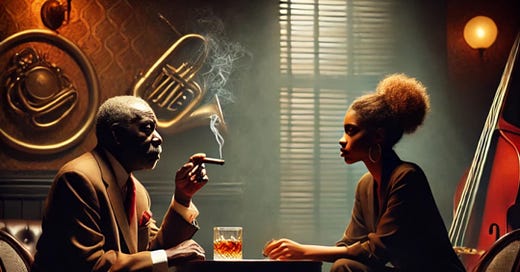A Lasting Note
The reporter’s gaze flickered between me and the low-lit room, a newly minted cocktail lounge with polished wood and subdued lighting. It had once been Leviathan’s Blues, a jazz club that was all muscle and grit in the ‘40s, where sounds spilled like secrets and secrets spilled like blood. They’d kept the brass saxophone on the wall, as a kind of nod, I suppose, though few would recognize it for what it was. But I knew it was my father’s—Curtis Royce’s saxophone, the last one he ever played.
I watched the reporter take in the scene, the muted notes of jazz tinkling overhead. She looked young—maybe mid-20s, barely old enough to remember the last waves of Harlem’s golden age, let alone the weight of a name like Curtis Royce. And that was fine. I wasn’t here to teach her history. I was here to talk about what really mattered.
She leaned in, flipping open her notebook. “They call him the father of postwar jazz innovation now,” she said. “But back then, his style was…divisive.”
I nodded, taking a long drag of the cigar the bartender had handed me, tasting the burn of aged leaves and memory. “Divisive,” I echoed. “That’s what they call it now, isn’t it? Just a difference of opinion between men. But it was more than that. It wasn’t just about jazz or styles—it was about Harlem itself, about who was allowed to shape its sound and who wasn’t.”
Keep reading with a 7-day free trial
Subscribe to Bathroom Breaks & Bedtime Tales to keep reading this post and get 7 days of free access to the full post archives.




